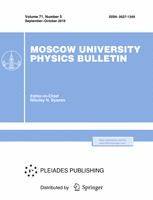Based on numerical modeling, the scaling (scale invariance) of spatial spectra of amplitude and phase images of fractal structures in a general optical system was estimated. The relevance of the study is due to the key role of spatial radiation spectra in the processes of optical information perception and processing. Particular attention is paid to the properties of stochastic light structures, which are widely used in art therapy and ophthalmology. For their construction, the properties of the two-dimensional Mandelbrot-Weierstrass function, as well as the properties of the stochastic model of constructive fractals, were used. Despite the disordered (speckle-like) nature of the field distribution in the generated structures, their spatial spectra had a fractal shape with clearly expressed scaling. After passing through the optical system of the initial field distribution, the spectrum contrast decreased, but the shape of the distribution of low-frequency components had a certain stability. Both amplitude and phase images had this property. With the growth of the fractal dimension of radiation, the region of stable arrangement of spectral components expanded, and with the broadening of the scattering function of the optical system, it sharply decreased. The scaling characteristics in images formed in coherent and incoherent light were compared. Their comparison showed that due to the wider transfer function of the optical system, distortions of spatial spectra in incoherent light are less significant. The study indicates the prospects of using fractal speckle distributions in medicine during light therapy sessions.
$^1$Moscow State University named after M.V. Lomonosov, Faculty of Physics, Department of Optics, Spectroscopy and Physics of Nanosystems\
$^2$



